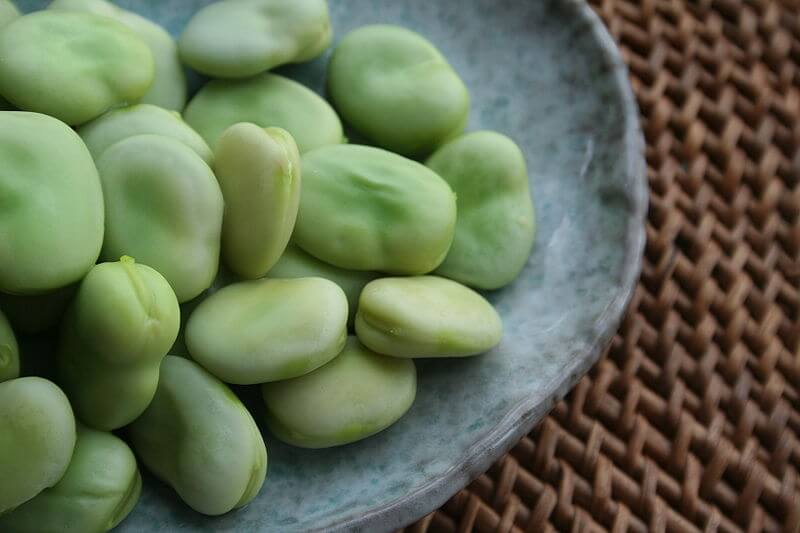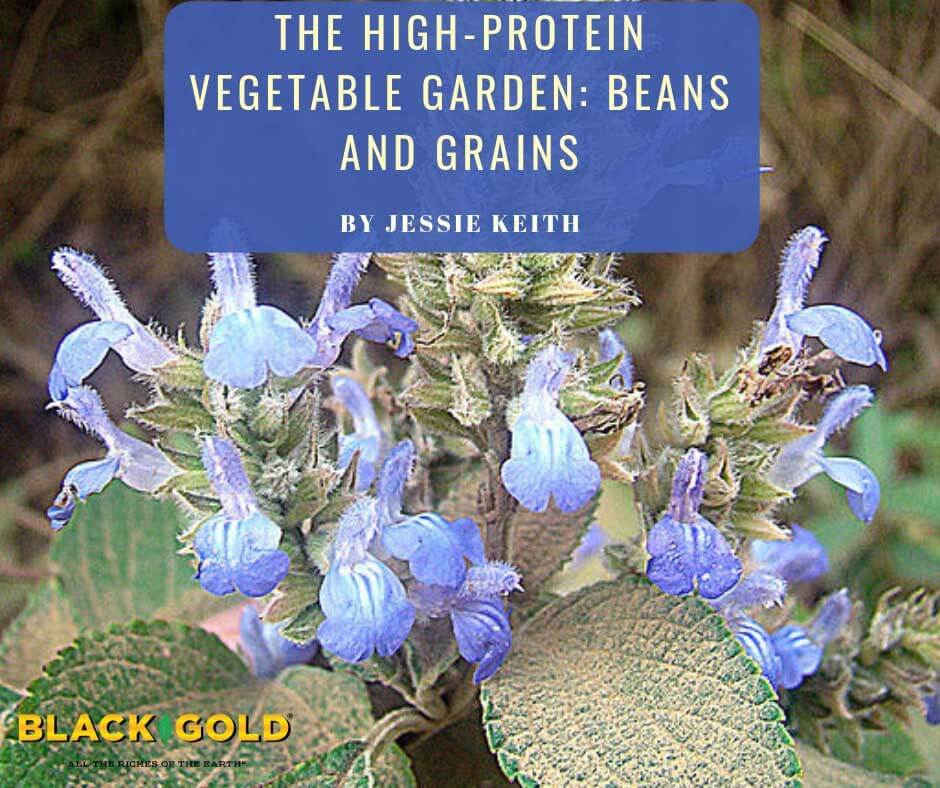
Vegetarian and vegan lifestyles have popularized high-protein garden vegetables. Growing a good selection of nutritious, protein-packed grains and beans means expanding upon the standard repertoire of veggies. The list may include cool-season legumes, like chickpeas and fava beans, as well as winter grains and warm-season crops, such as edamame and amaranth.
The first step of garden planning is arranging your desired crops by season. All the edibles in this article fall into three seasonal categories—winter cover crops (fall to spring), cool-season crops (spring and fall), and warm-season crops (late spring to early fall). Identifying good seed sources is also important. For lesser-grown grains and beans I recommend Salt Spring Seeds and Johnny’s Selected Seeds and for a good selection of beans I recommend Baker Creek Heirloom Seeds.
Winter Cover Crops
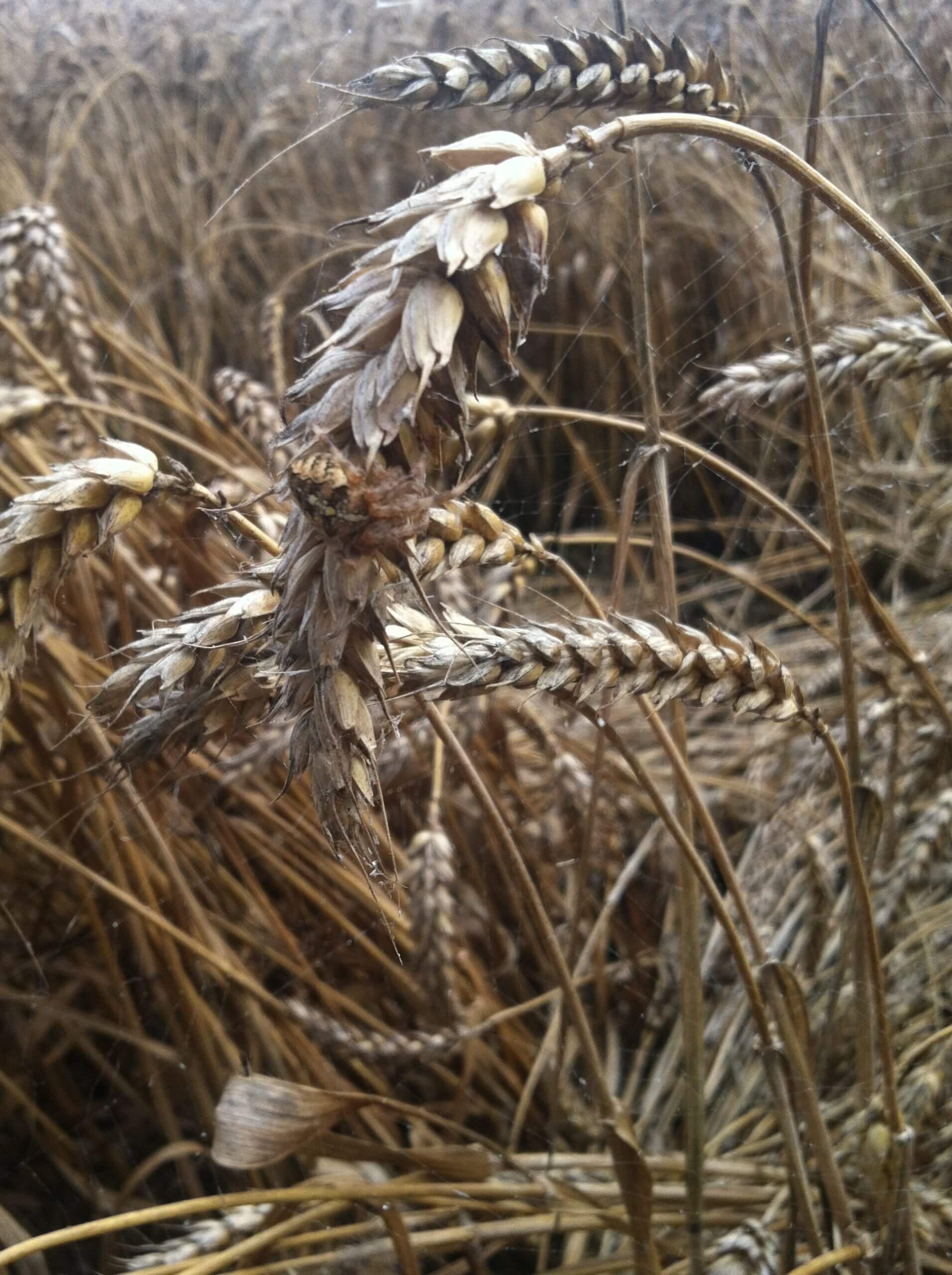
Buckwheat, winter wheat, and rye varieties serve as winter crops with high-protein seeds and grains that can be reaped in late fall or spring. As cover crops, they suppress weeds and feed and protect garden soils through winter.
Buckwheat (Fagopyrum esculentum, 19 grams protein/164 gram serving) is a legume that prefers mild sunny days and cool nights. As a cover crop, it suppresses weeds, breaks up tough soil with its dense roots, and naturally fixes nitrogen into the soil. Most gardeners plant it in midsummer for late-season cover and seeds. Lightly till the soil, broadcast seed over the area, and water it in. Germination should occur within a week or so. After several weeks, the robust plants will bear small white flowers that feed bees and produce exceptional honey. In the 10th week, clusters of dry seeds cover the plants. Gather the clusters before they shatter by cutting them into a closed bag or bowl. To separate the seed and chaff, run the clusters across an 11/64″ round steel sieve, and follow this by winnowing away any additional chaff. (Read more about growing buckwheat.)
Winter wheat and rye are hardy cover crops that can be planted in fall and bear grain in late spring to early summer. Spelt (Triticum spelta, 25 grams protein/174 gram serving), winter wheat (Triticum aestivum varieties, 24 grams protein/192 gram serving), and winter rye (Secale cereal, 25 grams protein/169 gram serving) are three good choices. In spring, plants grow quickly. They can be harvested when the plants and seedheads turn brown. Once fully dry, the chaff can be easily peeled off and winnowed away.
Cool Season High-Protein Crops
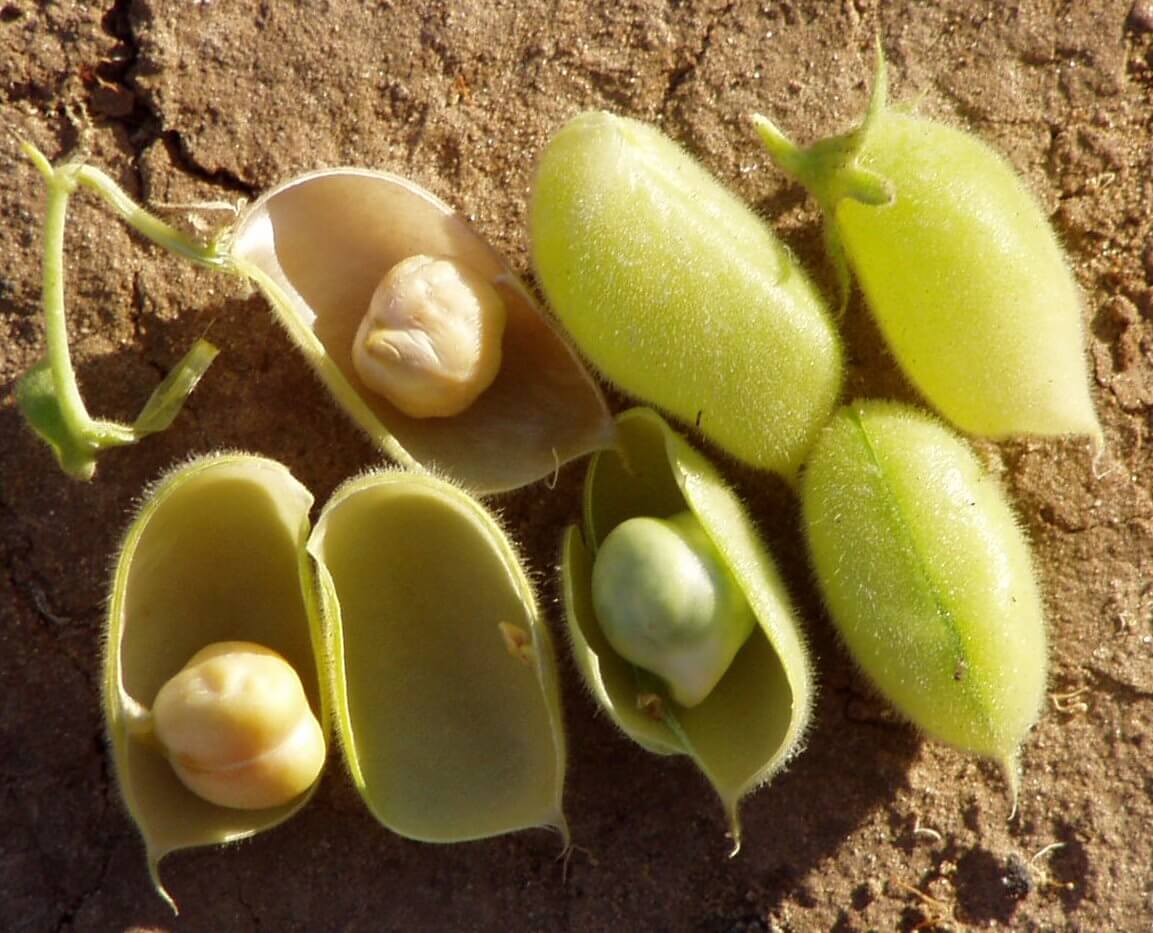
A surprising number of protein-packed legumes thrive in cool spring weather—these include chickpeas, fava beans, and quinoa. Spring legumes have the added benefit of fixing nitrogen into the soil, so plant these in areas where you plan to rotate in heavy feeding summer crops, like tomatoes.
Chickpeas (Cicer arietinum, 39 grams protein/200 gram serving) and fava beans (Vicea faba, 10 grams protein/126 g serving) are both ancient crops, dating back to 7,500-8,000 years, that originate from the Middle East. Both grow best in cool conditions with no temperature extremes. Sow them in spring, at the same time peas are planted. Pre-soak the seeds and plant them in fertile, well-drained soil 1.5 inches below the soil surface. Both should begin producing beans by late spring or early summer. Hot summer weather will cause plants to decline and flowers to drop before fruit set. Harvest and enjoy both beans fresh or allow pods to become fully dry on the plant before hulling and containing them for long-term storage.
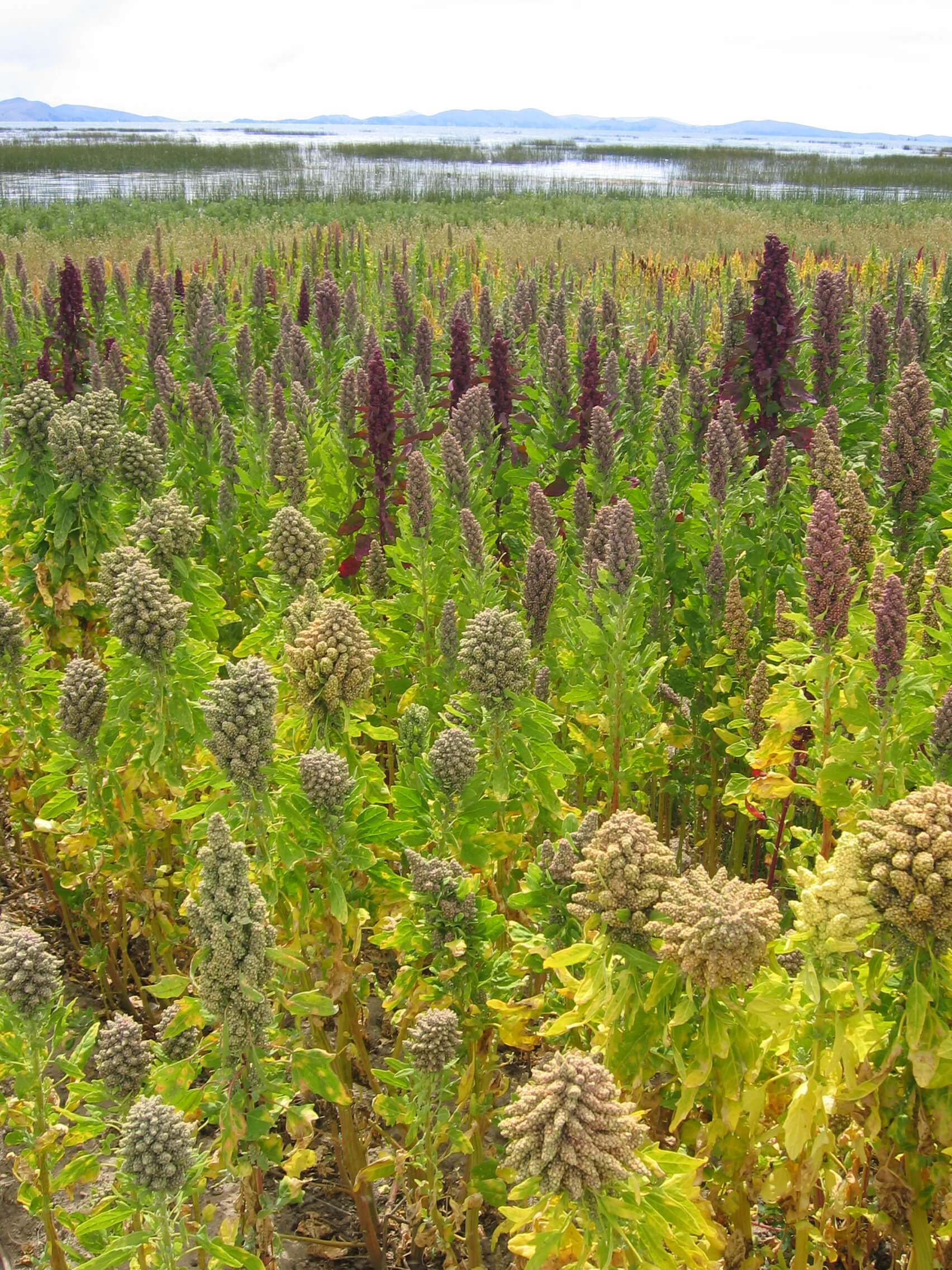
Quinoa (Chenopodium quinoa, 24 grams protein/170 gram serving) is an equally ancient crop that is sown in spring and harvested in early summer when the heads are fully dry. There are several varieties of this Andean native and amaranth relative that may have red, black, or tan seeds.
To plant quinoa seeds, work up the soil and amend with Black Gold Garden Compost Blend. Then lightly broadcast the seeds over the planting area and lightly rake them over. Seed heads should be fully dry by early summer. Cut them into a closed bag or bowl, and then winnow to separate the seeds from the chaff. The millet-like seeds will self sow if allowed to fall to the ground.
Warm-Season High-Protein Crops
In the summertime, try growing protein-rich amaranth, chia, edamame, and various beans. All thrive in hot weather and are easy to grow.
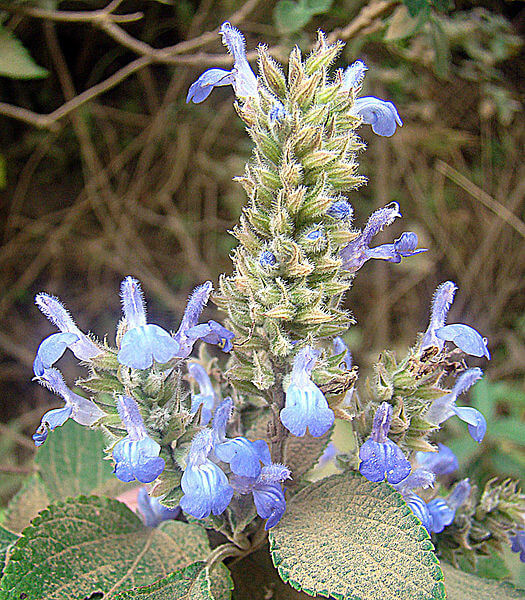
Lots of protein-rich summer seed crops are also ornamentals. Tall, bold purple amaranth (Amaranthus hypochondriacus, 26 grams protein/193 gram serving) has edible leaves in addition to producing loads of edible seeds. Plant it in spring after the threat of frost has passed. By summer, heat, and drought tolerant amaranths will produce large floral plumes. Harvest these in fall when they become dry; simply cut them off and shake them vigorously into a plastic bag to remove the seeds. Add the seeds to breads, muffins, or granola.
Chia seeds are produced by Salvia hispanica (4 grams protein/28 gram serving), a Mexican sage grows to 3 feet and bears spikes of blue flowers in summer, so it makes a great ornamental. In fall, its tall spiky seed heads are filled with seeds to cut and gather. Add them to smoothies or toast and sprinkle them on granola.
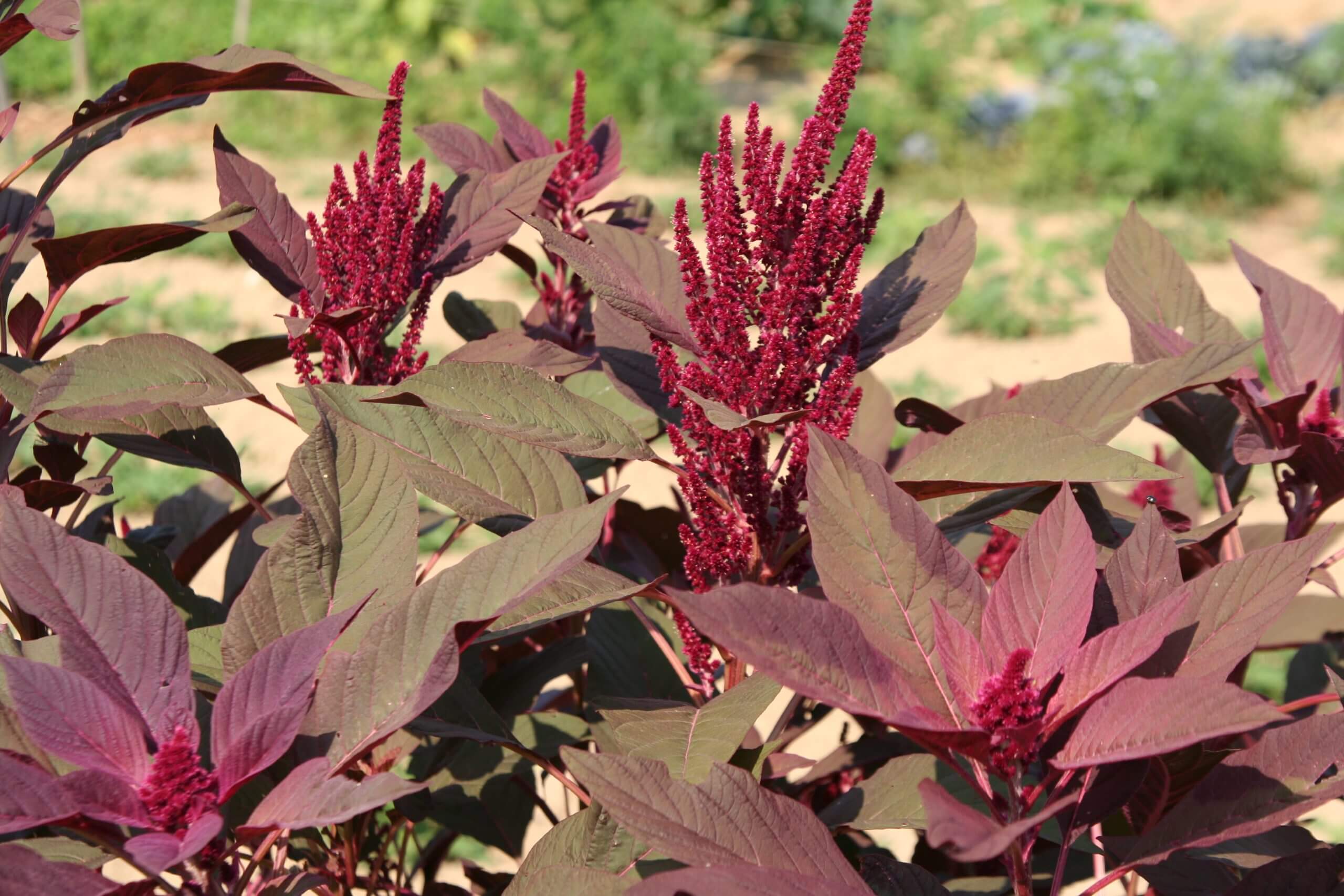
Edamame (Glycine max) have become increasingly popular with gardeners as more home varieties appear in seed catalogs. Opt for productive, short-season cultivars like ‘Envy‘ and ‘Fiskeby‘. Start seeds indoors and plant them outdoors after the threat of frost has passed. The heat-loving plants will produce fresh pods by midsummer. These and summer beans of all varieties, from limas to black beans and string beans, are great high-protein summer vegetables. (Click here to grow great summer string beans.)
All of these crops can be harvested dry and stored, but those that can be enjoyed fresh offer extra appeal. Few have the chance to enjoy fresh-picked edamame, favas, and chickpeas straight from the garden!
